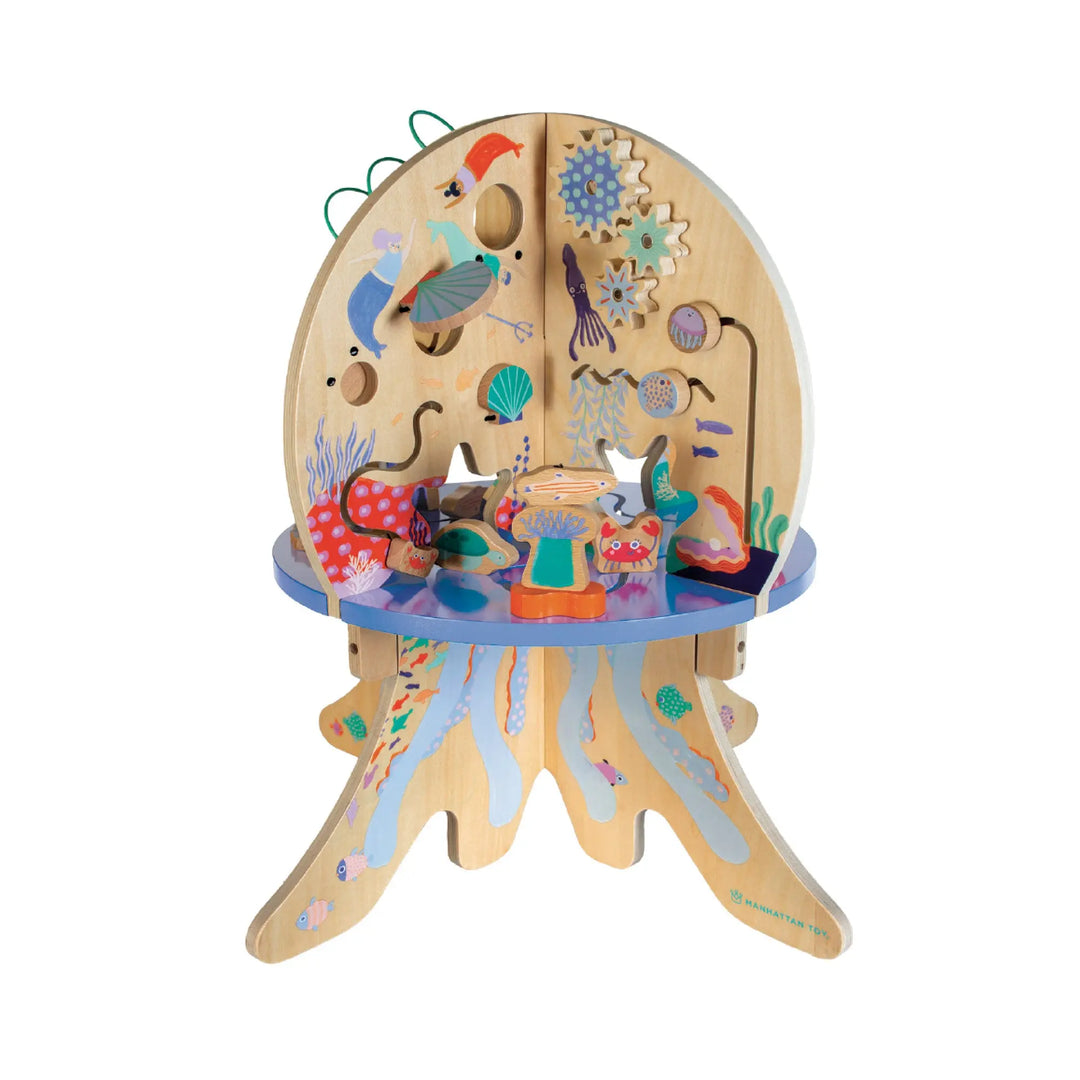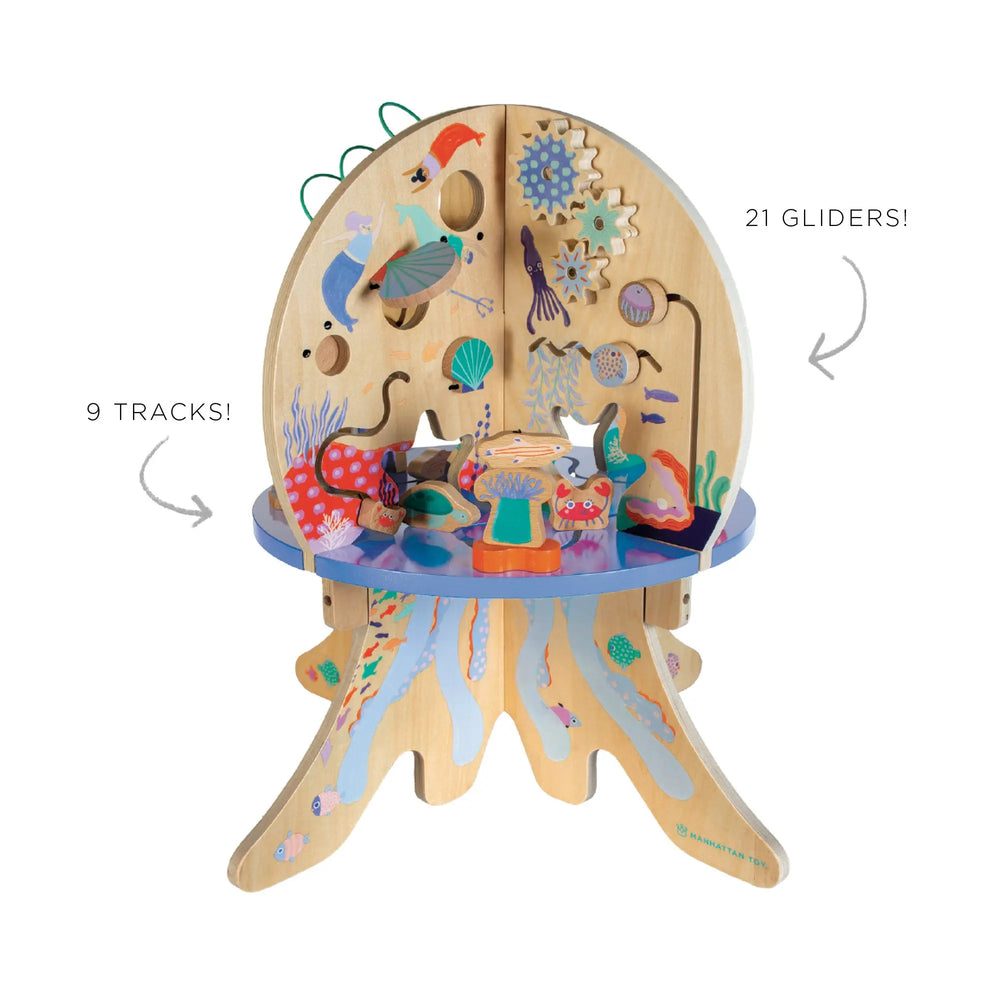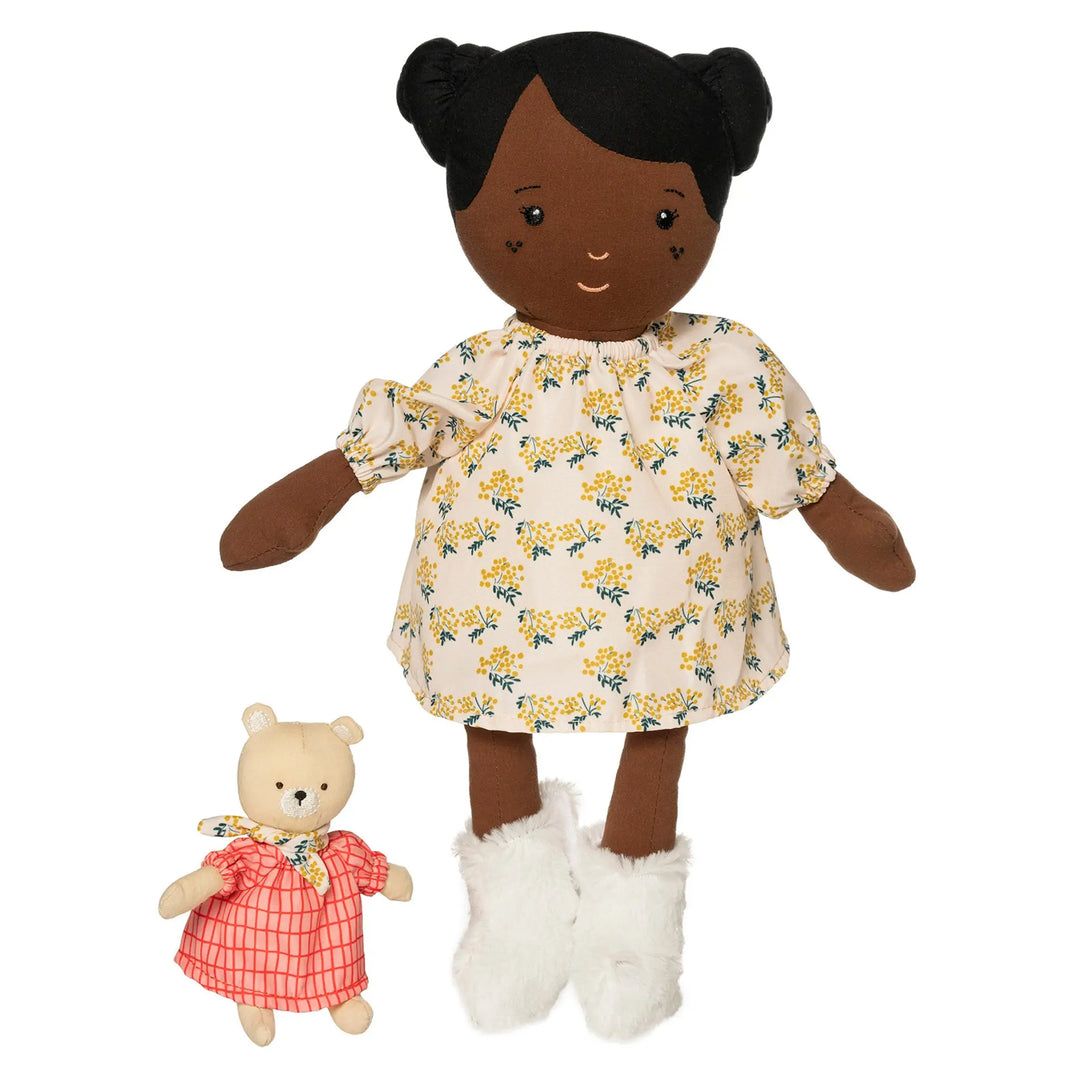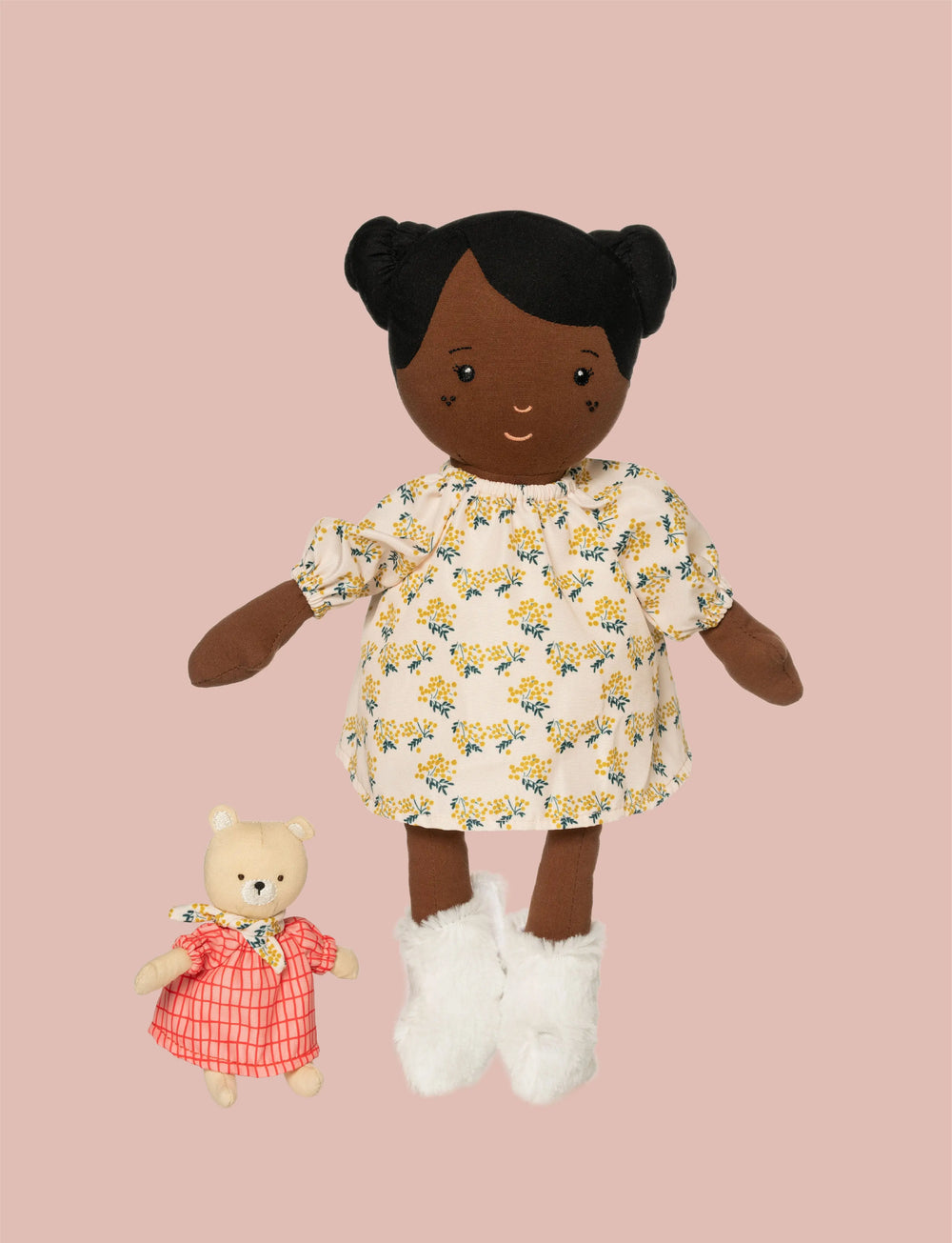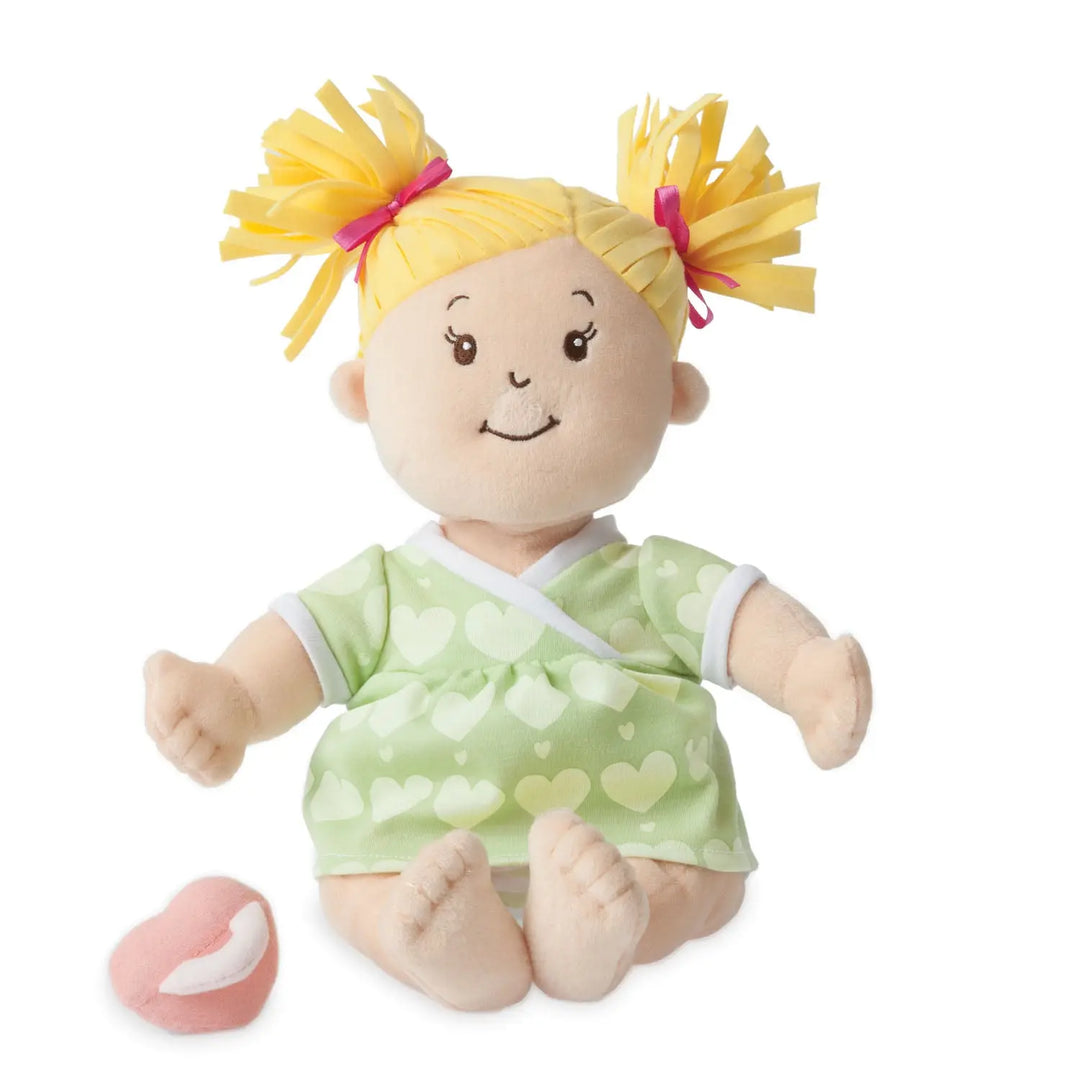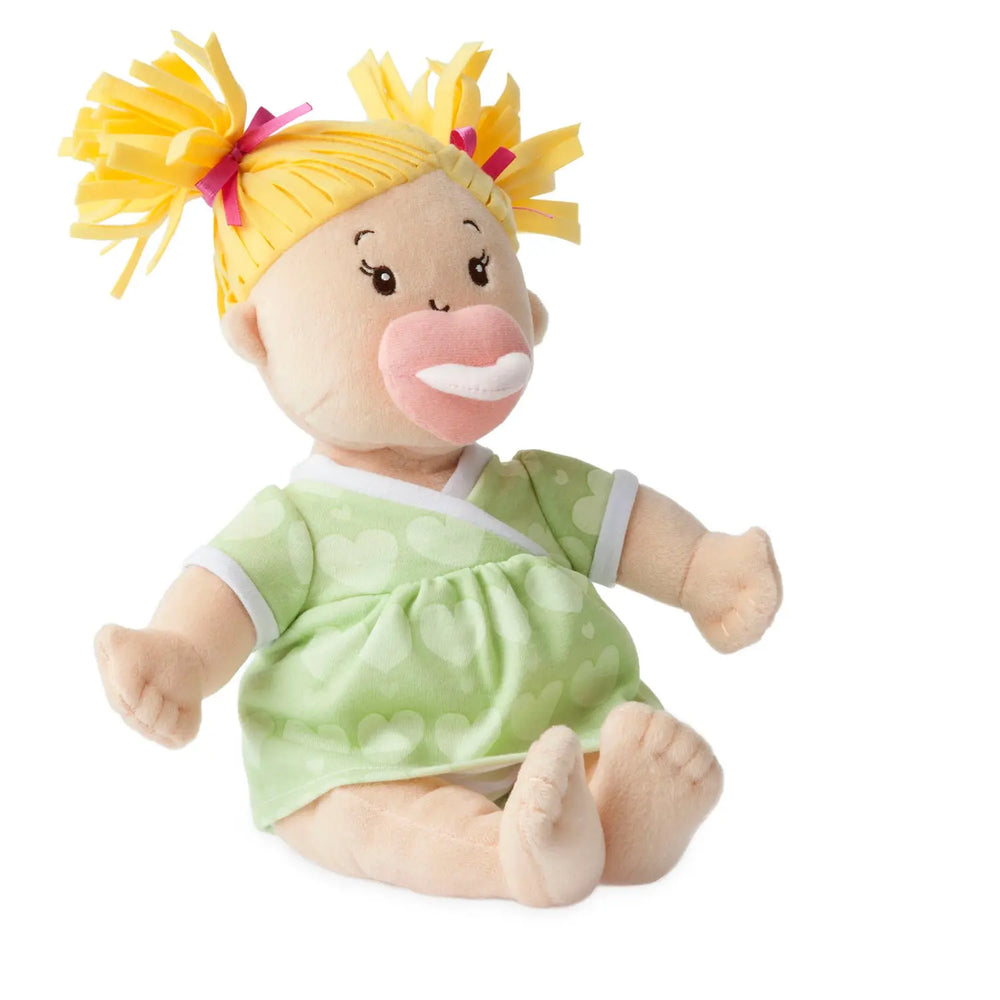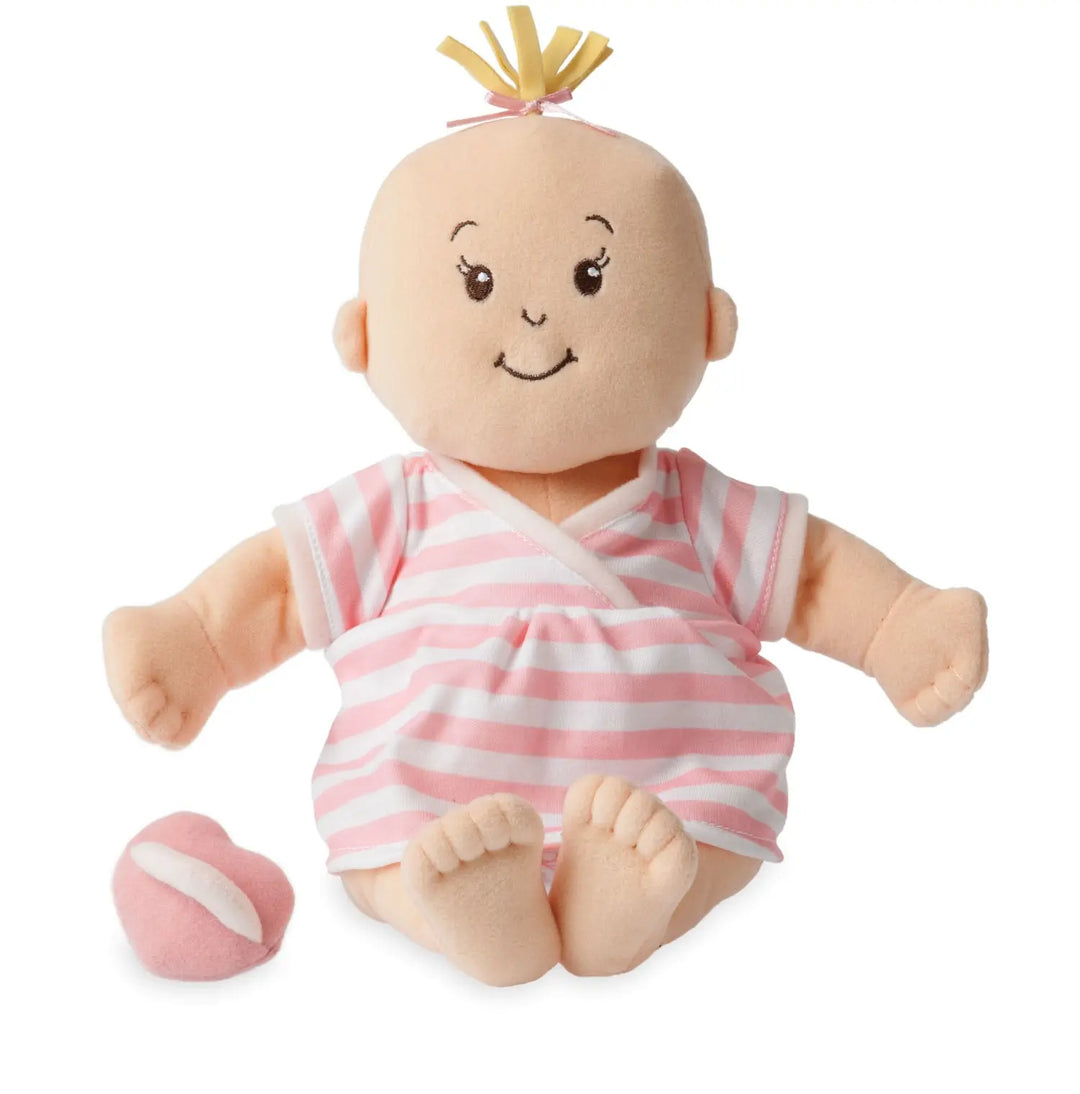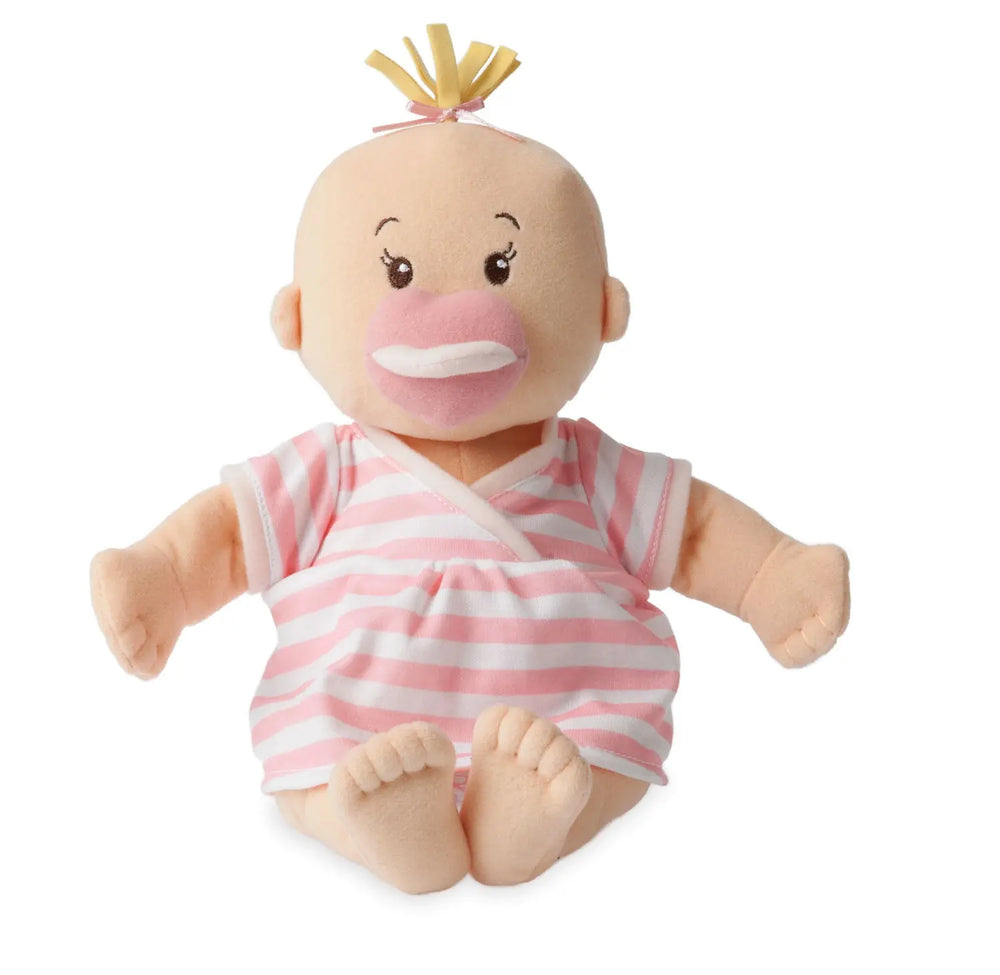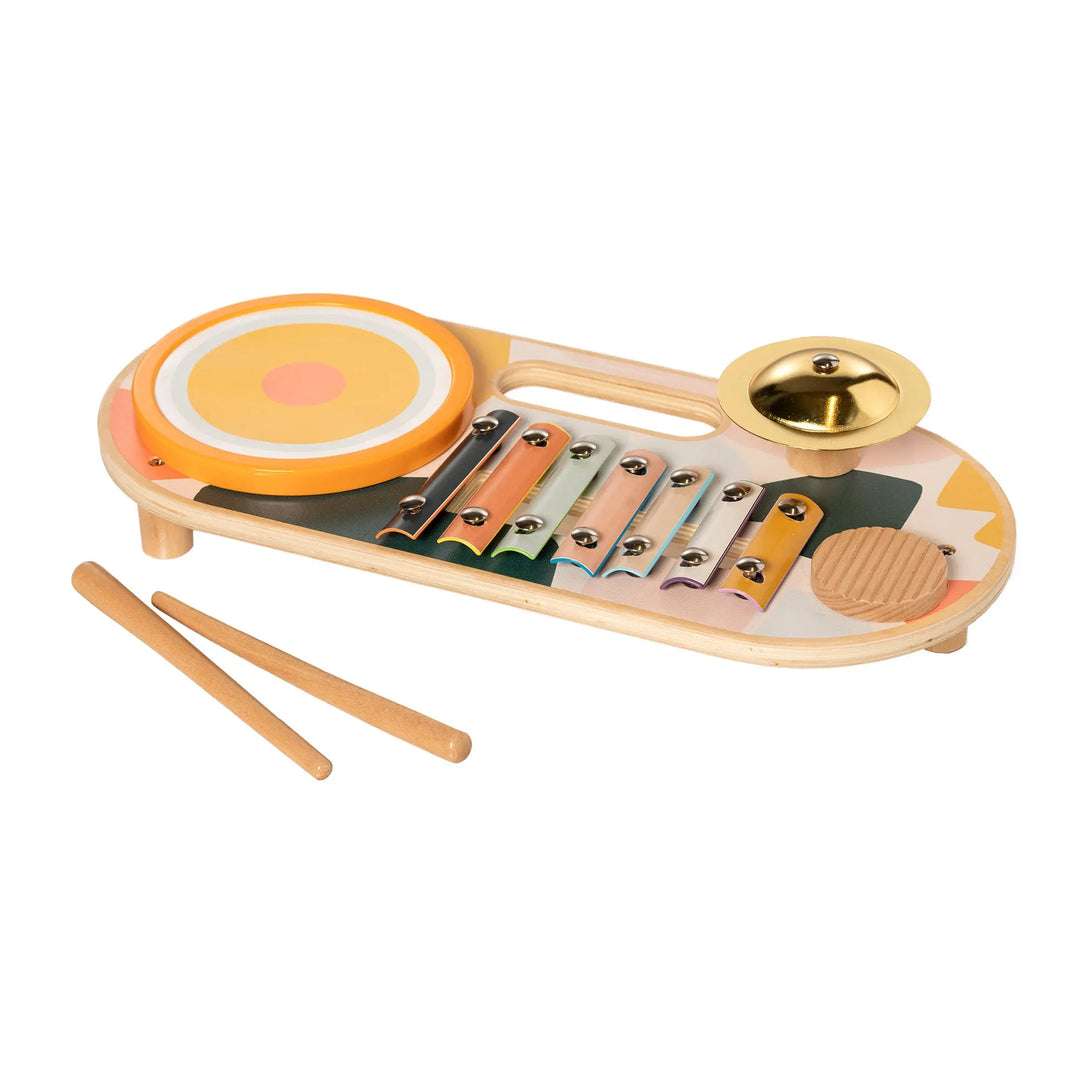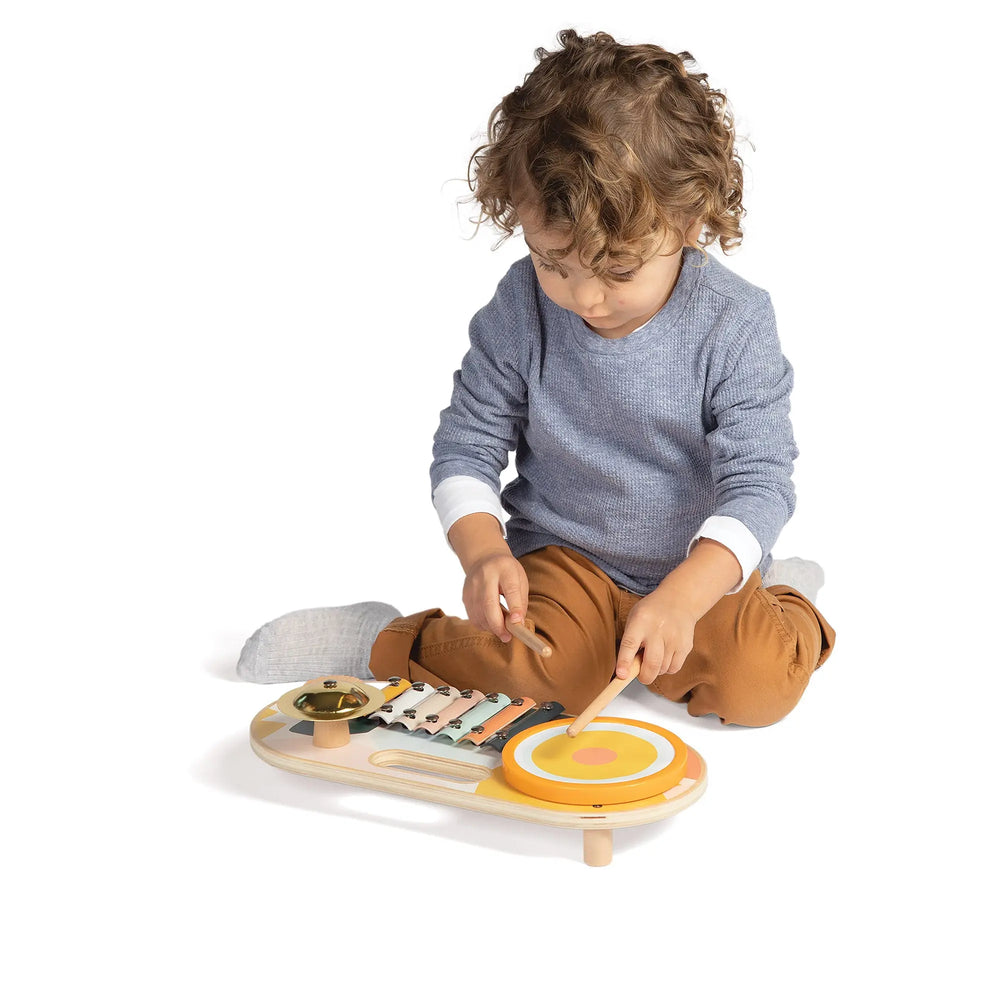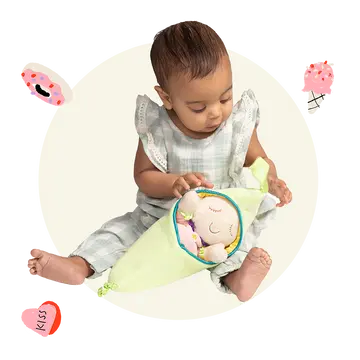Playful Learning
Spotlight: Preschool Teacher Mrs. Mandi Sauer shares how she prepares for the school year and the importance of play in the classroom
Most schools in Minnesota start the day after Labor Day. It’s a busy time of year for students, but especially for all the teachers, as it means a lot of prep work and planning. Have you ever wondered how teachers prepare for the school year? Or perhaps, how they manage to make learning “fun” for their students? Manhattan Toy decided to seek out the answers by meeting with a local MN teacher, Mrs. Mandi Sauer! Mrs. Sauer is a local Spanish Enriched Preschool teacher at St. David’s Center in Minnetonka. Here’s the inside scoop on how she prepares for the year and how she incorporates play into her lesson plans.
 Mandi begins preparing for the year by first reflecting on the previous year. “I think about what went well and what changes I may want to make. I also read through my student’s files, which allow me to better understand the strengths and potential weaknesses they may have.” Of course her planning doesn’t just involve being mentally prepared, but also acquiring all the necessary classroom materials her students will need. Then after one week of prepping, just like that, the school bell rings and she’s off to another year.
Mandi begins preparing for the year by first reflecting on the previous year. “I think about what went well and what changes I may want to make. I also read through my student’s files, which allow me to better understand the strengths and potential weaknesses they may have.” Of course her planning doesn’t just involve being mentally prepared, but also acquiring all the necessary classroom materials her students will need. Then after one week of prepping, just like that, the school bell rings and she’s off to another year.
 Trying to organize a group of 14-18 children under the age of five sounds challenging enough, sohow could one or even two teachers capture the attention of these young minds? How do they make learning “fun” and intriguing? Mandi incorporates play into her lesson plans to get her kids excited about learning! “My classroom is the perfect example of how play and learning come together. All of the activities I plan require hands on learning. Children learn by manipulating, touching, moving, seeing, and hearing. If we are learning about building structures, we are moving pieces to discover which blocks
Trying to organize a group of 14-18 children under the age of five sounds challenging enough, sohow could one or even two teachers capture the attention of these young minds? How do they make learning “fun” and intriguing? Mandi incorporates play into her lesson plans to get her kids excited about learning! “My classroom is the perfect example of how play and learning come together. All of the activities I plan require hands on learning. Children learn by manipulating, touching, moving, seeing, and hearing. If we are learning about building structures, we are moving pieces to discover which blocks
 will fit together and balance, we are reading about famous buildings around the world and drawing pictures of them, we are counting the number of blocks we can stack before they fall over. When children learn through play, they become an engaged member of their education, and they retain the information in a more concrete way,” says Mandi.
Teaching styles also play a major part in keeping young students engaged. For her young pupils, Mandi uses a Reggio Emilia approach to teaching, which means that she follows the lead of her students, in terms of interests, to create general lesson plan themes. She explains how “this philosophy follows the idea that children should be the forerunners of their education; they are encouraged to share their thoughts, hypotheses, and ideas about the information that interests them.”
Overall, a teacher’s work is never done. They are always coming up with new ways to help their students grow and develop. However, as the age old saying goes, ‘with hard work comes great rewards’. “One of the most amazing and rewarding moments, for me as a teacher, is seeing the light bulb turn on when a child realizes how to put letter sounds together to make words,” says Mandi. After all, what could be more rewarding than seeing a child use the skills they have worked so hard to learn?
As your child begins the school year, know that their teacher has put a lot of time and thought into planning the year ahead. After all, fostering your child’s academic growth is their main goal as a teaching professional. As for making learning fun, if they are anything like Mrs. Sauer, your child will have a fantastic time on their learning adventure.
will fit together and balance, we are reading about famous buildings around the world and drawing pictures of them, we are counting the number of blocks we can stack before they fall over. When children learn through play, they become an engaged member of their education, and they retain the information in a more concrete way,” says Mandi.
Teaching styles also play a major part in keeping young students engaged. For her young pupils, Mandi uses a Reggio Emilia approach to teaching, which means that she follows the lead of her students, in terms of interests, to create general lesson plan themes. She explains how “this philosophy follows the idea that children should be the forerunners of their education; they are encouraged to share their thoughts, hypotheses, and ideas about the information that interests them.”
Overall, a teacher’s work is never done. They are always coming up with new ways to help their students grow and develop. However, as the age old saying goes, ‘with hard work comes great rewards’. “One of the most amazing and rewarding moments, for me as a teacher, is seeing the light bulb turn on when a child realizes how to put letter sounds together to make words,” says Mandi. After all, what could be more rewarding than seeing a child use the skills they have worked so hard to learn?
As your child begins the school year, know that their teacher has put a lot of time and thought into planning the year ahead. After all, fostering your child’s academic growth is their main goal as a teaching professional. As for making learning fun, if they are anything like Mrs. Sauer, your child will have a fantastic time on their learning adventure.
 Looking for fun new ways to support your child’s elementary learning skills? Mandi has a few great suggestions:
Looking for fun new ways to support your child’s elementary learning skills? Mandi has a few great suggestions:
- Use movement with learning whenever possible!
- Learning the alphabet? Try using the “alphabet chant”; which gives each letter a movement to go with the sound it makes. Click here to learn the alphabet chant. Find more helpful charts on your school district’s website like this one.
- Encourage your child to use crayons, scissors, etc. to strengthen the hand muscles needed for writing. Crayons require a stronger push from the hand than markers, so use crayons when possib
- Use the following activities to help with reading/ writing skills:
- Have your child crawl through a tunnel with cut out letters on the ground. When they touch a letter, have them say its name and sound.
- Lay letter cutouts on the floor or ground; bounce a ball on a letter and say its name and sound.
- With your child, draw the letters in the air with your finger and practice saying the name and sound.
- Pin letters on the ends of clothespins. Write out the letters/ words you want your child to know and have them put the correct letter clothespins on the words.
- Those Mean Nasty Dirty Downright Disgusting but...Invisible Germs; By: Judith Anne Rice
- Bears in the Night; By: Stan and Jan Berenstain
- Chica Chica boom boom; By: Martin, Bill and Archambault, John; with Illustrations by: Ehlert, Lois
- The “Five Little Monkey “ book series; By: Eileen Christelow
